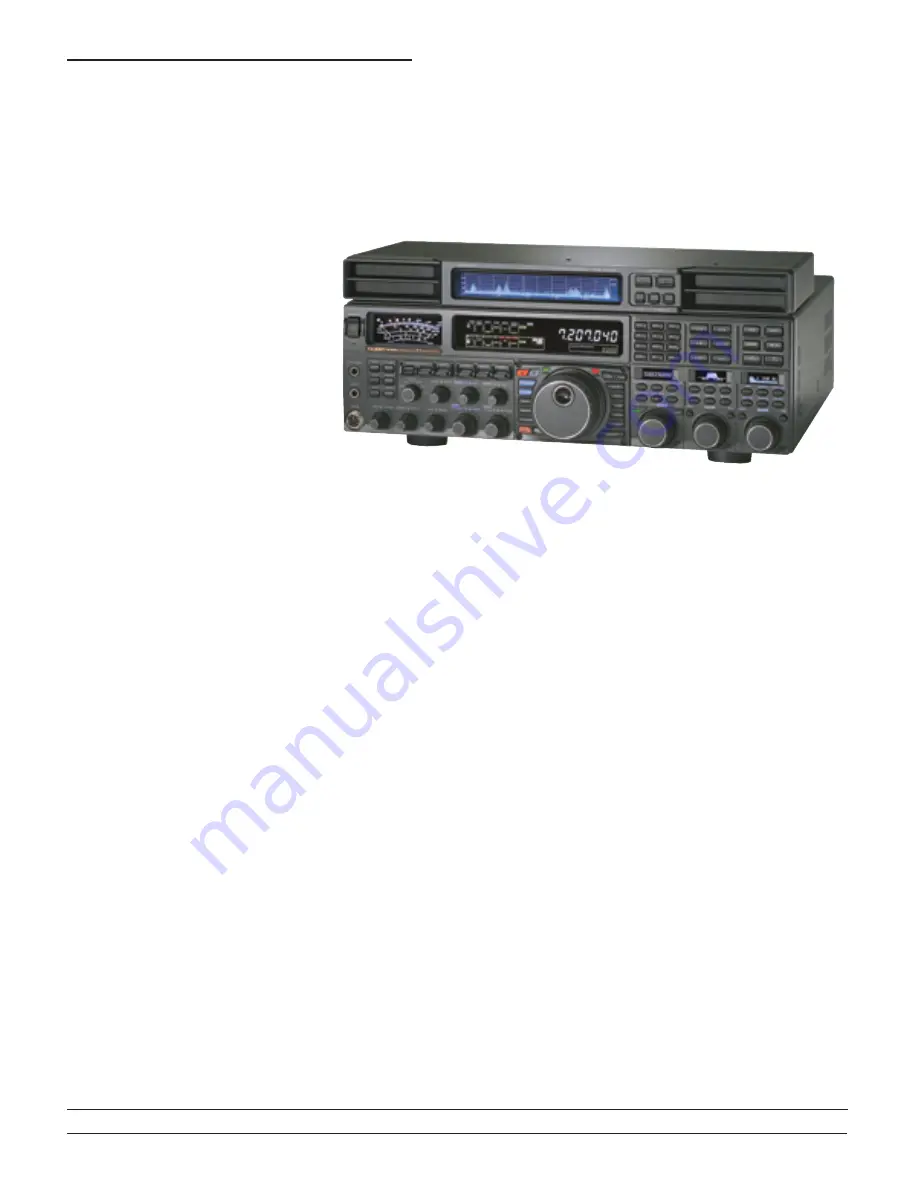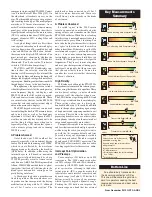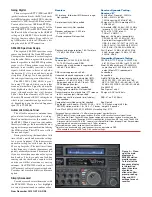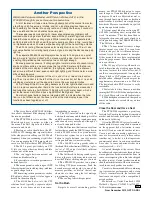
From December 2010 QST © ARRL
PRODUCT REVIEW
Mark J. Wilson, K1RO
Product Review Editor
Reviewed by Rick Lindquist, WW3DE
Managing Editor,
National Contest Journal
Yaesu’s latest colossus
rules
, delivering
top tier performance at a
substantially
less
than a top tier price. The FT
DX
5000 series
establishes a new benchmark, the highest
close-in IMD dynamic range and third-order
intercept we’ve ever measured. It
can
and
will
do the heavy lifting for the most demanding
DXer or contester.
This radio shares DNA with earlier Yaesu
offerings. Over the past several years, Yaesu
has deployed an array of such signature
signal enhancing features as
Contour
,
VRF
,
µ-Tune
and
Class A
. As with the FT-2000
and FT
DX
9000 models reviewed previously,
the FT
DX
5000 builds upon this legacy, and
it may be helpful to reread those reviews
(you
did
read them already, right?).
1
Three
FT
DX
5000 models are available according
to option package: The FT
DX
5000, the
FT
DX
5000D and the FT
DX
5000MP. The
basic 5000 is very well equipped. The D
model adds the SM-5000 monitor scope, and
the MP adds the SM-5000, 300 Hz roofing
filter (optional on the other models) and high
stability oven controlled crystal oscillator.
The FT
DX
5000D with optional 300 Hz
roofing filter reviewed here is a transceiver
for the discriminating contester or DXer,
who may even consider its roughly $6000
price a bargain. Although extremely rich in
performance, it lacks some “convenience”
features. For example, you cannot connect
a keyboard for digital modes or data entry.
Then again, you don’t put a backup cam on
an Indy car. Optional Yaesu accessories let
you trick out your ride.
Some Broad Strokes
Main (A) and subreceiver (B) perfor-
mance tops that of several vaunted radios
already on the market, although the main
Yaesu FT
DX
5000D HF and
6 Meter Transceiver
receiver does outperform the subreceiver (see
Table 1). The two discrete and comparable
receivers make it possible to transmit and/or
receive on separate bands — SO2R in a box
(details to come)!
Both receivers cover from 0.03 to 60 MHz.
Receiver A is double conversion, with the
first IF at 9 MHz and the second DSP IF at
30 kHz for SSB and CW and 24 kHz for AM
and FM modes. Receiver B is a triple-
conversion design, with the first and second
IFs at 40.455 MHz and 455 kHz, respectively,
and the DSP third IF identical to the second
IF in the main receiver. The 300 and 600 Hz
roofing filters are not available to the sub-
receiver.
The radio delivers 200 W on HF and
6 meters on SSB and CW. Yaesu advises
reducing the power to
1
⁄
2
to
1
⁄
3
of maximum
when using high duty cycle modes such
as RTTY or PSK31 for “longer than a few
minutes,” and rolling back to 50 W on AM.
As revisions become available, you can
update the radio’s firmware via an RS-232
port using files downloaded from the Internet.
Since most new PCs don’t come with RS-232
serial adapters/ports, USB would have been
a nice option; there are arguments on both
sides of this technological issue, however.
A serial to USB adapter (Prolific chipset)
worked fine for me. We did not perform a
firmware update on our review radio, since
this would have presented a moving target
for evaluating performance. The procedure
is relatively straightforward, and Yaesu has
resolved early issues with the update writer.
The FT
DX
5000 takes DSP noise reduc-
1
The following
QST
Product Reviews
may be of interest: FT-2000 (Feb 2007),
FT-2000D (Oct 2007), FT
DX
9000D
(Aug 2005), FT
DX
9000 Contest (Mar 2006)
and FT
DX
9000MP (Jul 2010). Past
QST
reviews are available to ARRL members
at
www.arrl.org/product-review
.
tion to a new level — absolutely the best
implementation I’ve ever experienced. It’s
just spectacular and could even make the
horrid racket from my neighbor’s solar array
system melt into the background.
To enhance selectivity, the ’5000 offers
a selection of six pole crystal roofing filters
(300 Hz, 600 Hz, 3 kHz, 6 kHz and 15 kHz
are available for the main receiver), a feature
several quality transceivers have begun of-
fering. On CW the 300 Hz roofing filter is
amazing. Coupled with a narrow DSP filter,
you can sidle up to the strongest signals on
the band to pull someone out.
In general, the radio’s various DSP
tools may impart some echo — the audio
equivalent to “ringing” — especially at more
extreme settings. This apparently is a result
of latency.
A 46.3 Pound Gorilla in the Shack
This is a substantial radio, although it
doesn’t match the girth or weight of the
FT
DX
9000MP reviewed in July 2010
QST
,
nor that radio’s 400 W output. The ac power
supply is built in. The FT
DX
5000 presents
the user with a surfeit of knobs, buttons and
displays that let you know you’re at the helm.
The ample main tuning knob augments this
sense of control. It can be daunting at first.
Some controls probably could have been
relegated to menus;
MIC
gain, for example, is
not something you typically adjust on the fly.
The front panel layout is sensible, al-
though I did wish the legends were in a more
contrasting shade. Style does
not
triumph
over substance here. I’d expressed similar
























